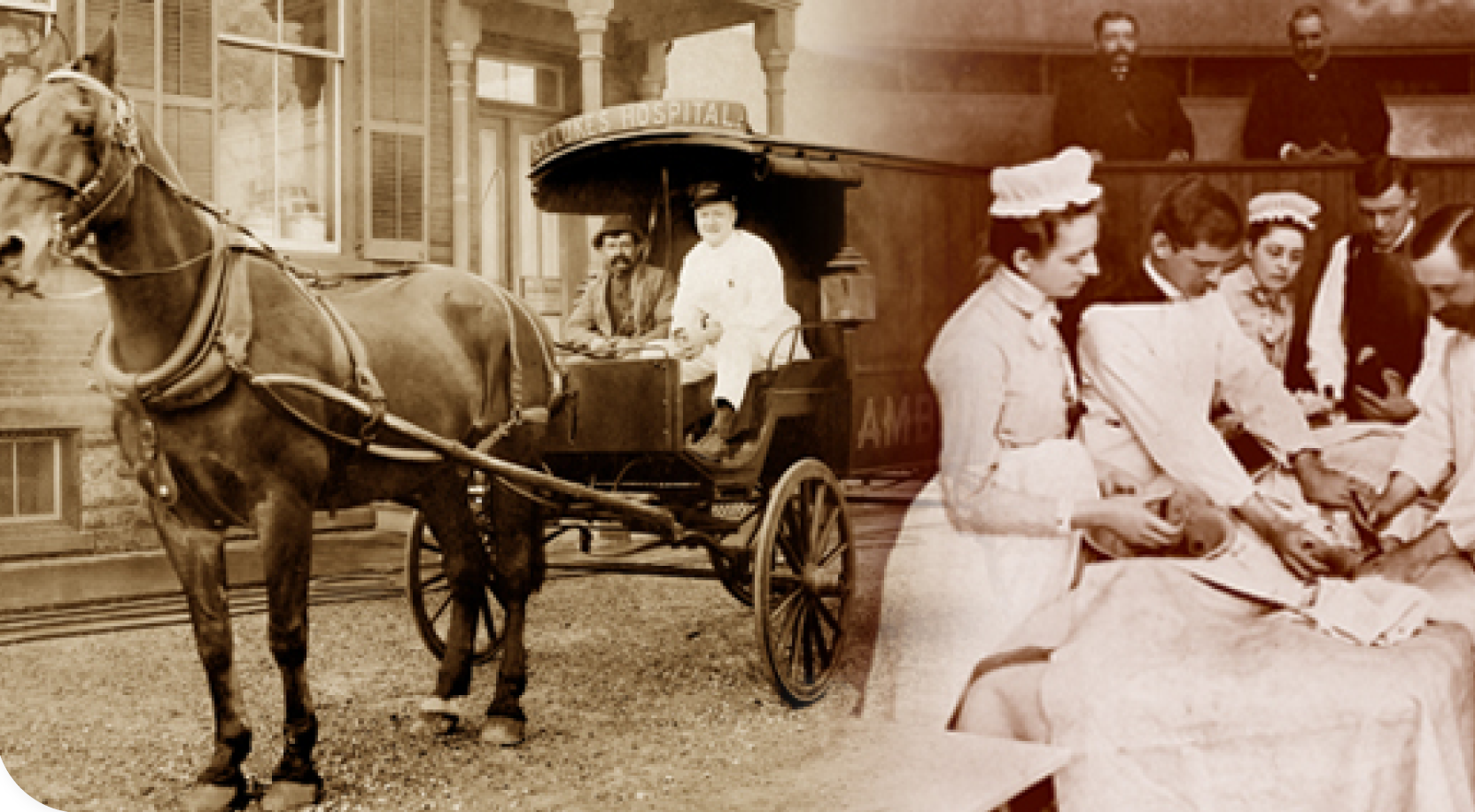Our History

Providing high-quality care since October 17, 1873.
In late 1871, the Reverend Courtland Whitehead, a rector of South Bethlehem's Episcopal Church of the Nativity, met with Tinsley Jeter, John Smylie and Robert H. Sayre of the Bishopthorpe School in Fountain Hill to discuss his vision of a small hospital in South Bethlehem to care for the injured.
The original charter established St. Luke’s, named for the evangelist/physician, as a hospital on March 29, 1872 and was finalized later that year. The hospital was funded with donations from leaders and members of the community with Grace Episcopal Church of Allentown providing the first donation of $20, and labor was donated to refurbish the original building. That model, of bringing and keeping care local, so that people do not have to travel to New York and Philadelphia, is still in place today.
On October 17, 1873, the first patient was admitted to what was St. Luke’s Hospital on Carpenter Street (now Broadway), nestled in the scenic hillsides in Fountain Hill borough/ Bethlehem, Pennsylvania. Forty-seven patients were treated in the first year of operation. That same year, the United States was still recovering from the Civil War, Ulysses S. Grant was entering his second term as president and there were only 37 states.
This time was also the beginning of great leaps forward in medicine, and over the next century, St. Luke’s would pioneer everything from the use of antiseptic to the adoption of X-rays as a diagnostic tool to its first open heart surgery and designation as a Level I trauma center.
Over and over again, the hospital exceeded its already impressive accomplishments with massive modernization projects that included utilizing the most innovative surgical, imaging and medical options available.
As the area's first community hospital, St. Luke’s has provided cost-effective and high-quality care to patients, regardless of their ability to pay, for over 150 years. Today, St. Luke’s University Health Network is comprised of 15 campuses, 2,200+ physicians and providers, primary and specialist care sites, various outpatient testing and service facilities, a regional medical school campus, the nation’s oldest nursing school, home health, inpatient and outpatient hospice services, the largest trauma network in Pennsylvania and more than 1,900 volunteers.